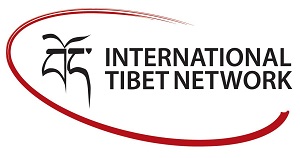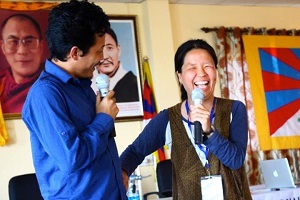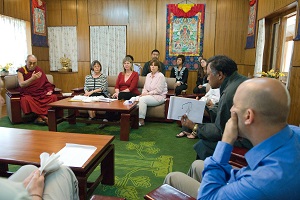 Special to the Philanthropy Journal
Special to the Philanthropy Journal
By Alison Reynolds
Ever since China invaded Tibet nearly 70 years ago, the people of Tibet, their exiled brothers and sisters and exiled government have fought valiantly and non-violently to gain the political support they deserve. For decades there was virtually no grassroots Tibet “movement”, but that all changed in the late 1980s when Tibetans in Lhasa undertook a number of popular uprisings that were witnessed first-hand by independent travelers to Tibet. Bringing back home stories of courage and bloodshed, a number of these travelers worked alongside exiled Tibetans to establish a number of Tibet campaign Groups, primarily in Europe and North America. Also at around this time the Dalai Lama, who had been forced to escape into exile in 1959, began travelling much more extensively, meeting world leaders and attracting considerable support. This combination of events meant that His Holiness, the Tibetan Government-in-Exile, Tibetans inside Tibet and less than a dozen small Tibet campaign Groups achieved unprecedented international media and public attention for the issue of Tibet.
 By the end of the 1990s there were around 250 Tibet-related Groups in over 50 countries working actively to pressure the Chinese government and the international community to find a peaceful resolution of the conflict between China and Tibet. There were campaign successes – for example stopping the World Bank from financing the population transfer of Han Chinese into Tibetan areas – usually the result of one or more Tibet Groups mobilizing others around the globe to increase international pressure, but the resources available to support international coordination of campaigns were very limited, and Tibet Groups frequently struggled to find appropriate strategies and the resources to act on good ideas.
By the end of the 1990s there were around 250 Tibet-related Groups in over 50 countries working actively to pressure the Chinese government and the international community to find a peaceful resolution of the conflict between China and Tibet. There were campaign successes – for example stopping the World Bank from financing the population transfer of Han Chinese into Tibetan areas – usually the result of one or more Tibet Groups mobilizing others around the globe to increase international pressure, but the resources available to support international coordination of campaigns were very limited, and Tibet Groups frequently struggled to find appropriate strategies and the resources to act on good ideas.
 In 1999, a Tibetan activist named Lobsang Gyalpo initiated a discussion about these shortcomings, leading Thupten Samdup from Canada to convene and task an ad hoc committee of Tibet campaigners to address the problem. Their solution was to propose the creation of an international network for Tibet Groups, which delegates at the 3rd International Tibet Support Group Conference in Berlin in 2000 unanimously supported. The International Tibet Network was born.
In 1999, a Tibetan activist named Lobsang Gyalpo initiated a discussion about these shortcomings, leading Thupten Samdup from Canada to convene and task an ad hoc committee of Tibet campaigners to address the problem. Their solution was to propose the creation of an international network for Tibet Groups, which delegates at the 3rd International Tibet Support Group Conference in Berlin in 2000 unanimously supported. The International Tibet Network was born.
The Network’s vision is a more effective and successful Tibet movement, able to bring an end to human rights violations in Tibet and support the Tibetan people’s right under international law to determine their future political, economic, social, religious and cultural status. The Network fulfils its Mission by facilitating the development and implementation of coordinated strategic campaign, fostering increased collaboration between organizations, building the skills and capacity of Tibet Groups, and applying lessons learned from the movement’s past successes and failures. We organize Regional Conferences and Trainings, convene Campaign Working Groups to develop campaigns, and provide the movement with generic materials (digital and otherwise) in a variety of languages.
 The International Tibet Network is committed to non-violence as a fundamental principle of the Tibetan struggle. The Network regards Tibet as an occupied country and recognizes the Tibetan Government in Exile as the sole legitimate government of the Tibetan people. Beyond these principles, we respect the variety of views and opinions of its Member organizations and strives to be inclusive of all Groups in the belief that diversity strengthens our movement.
The International Tibet Network is committed to non-violence as a fundamental principle of the Tibetan struggle. The Network regards Tibet as an occupied country and recognizes the Tibetan Government in Exile as the sole legitimate government of the Tibetan people. Beyond these principles, we respect the variety of views and opinions of its Member organizations and strives to be inclusive of all Groups in the belief that diversity strengthens our movement.
All interested non-government organizations with a focus on Tibet are invited to join the Network; our membership is primarily campaign Groups that engage in political work, but we include organizations whose purpose is to promote Tibetan culture, since we recognize that there are parts of the world where political campaigning is very difficult. Governance is through a 20-person Steering Committee elected by Tibet Groups across the world and including two observers from the Central Tibetan Administration.
For the first few years the Network struggled with a lack of resources but grants from Isdell Foundation and National Endowment for Democracy enabled it to create a full Secretariat in 2006, at which time I was appointed as Executive Director, along with a full-time International Coordinator, Campaigns Coordinator and two Regional Coordinators. As a member of Thubten Samdup’s “ad hoc” committee, I was heavily involved and invested from the start in the concept of a more collaborative and effective movement.
 The new Network Secretariat’s earliest international priority was Beijing’s 2008 Olympic Games. With an Olympics Campaign Coordinator in post and the whole movement convinced of the importance of the opportunity, this became the biggest international campaign the movement has ever implemented. Its significance escalated dramatically when Tibetans in Tibet took to the streets in their thousands, in a series of Uprisings across the Tibetan Plateau in 2008. Tibet was back in the headlines once more. Chinese state media’s response included a unintentionally flattering – if in places extremely inaccurate – critique of the Network (where we were accused of ‘training our underlings to speak uniformly when interviewed by the media’) and the wider movement.
The new Network Secretariat’s earliest international priority was Beijing’s 2008 Olympic Games. With an Olympics Campaign Coordinator in post and the whole movement convinced of the importance of the opportunity, this became the biggest international campaign the movement has ever implemented. Its significance escalated dramatically when Tibetans in Tibet took to the streets in their thousands, in a series of Uprisings across the Tibetan Plateau in 2008. Tibet was back in the headlines once more. Chinese state media’s response included a unintentionally flattering – if in places extremely inaccurate – critique of the Network (where we were accused of ‘training our underlings to speak uniformly when interviewed by the media’) and the wider movement.
Even whilst the Olympics campaign was running at full speed, we recognized that we would need an overarching strategy to provide direction once the Olympics campaign was finally over, so a Network Task Force was established to develop proposals for a broad Strategic Campaign framework that Tibet Groups could consider. The Plan that was created and endorsed by our member Groups contains four main strands of work that guide our work to this day:
- Put Tibetans in Tibet first, in recognition that their courage and resistance against China’s rule give the support movement its legitimacy and inspiration. Under this strand we focus and respond to what is happening in Tibet. We campaign on political prisoners, on the impact on Tibet’s nomads of China’s climate change policies, and react to mass demonstrations and the tragedy of over 140 self-immolation protests in Tibet.
- Exert renewed and more sustained pressure on our Governments and on companies for tangible action that would help Tibet. Given the increasing success of China in bullying nations over support for Tibet, this is a very challenging area of work. However, the Tibet movement has become increasingly effective in recent years in relation to United Nations Human Rights Council mechanisms such as the Universal Periodic Review and Committee Against Torture, and we have plans to highlight the impossibility for civil society under the rule of China’s Communist Party to have any meaningful engagement with China’s forthcoming G20 summit (September 2016). The geopolitical significance of Tibet’s environment is an increasingly important part of this strand of work.
- Shine a spotlight on China’s leaders who are responsible for Tibet policy. To make China’s Communist Party less opaque (despite the greater cult of personality around Xi Jinping) we identified and profiled around 60 of these individuals on a special website. We also strongly encourage Tibet Groups to protest visiting Chinese leaders, to show them the Tibet issue will not go away and maximise publicity for Tibet. In some cases these have resulted in legal cases against our own police forces, to challenge how China’s political influence undermined the democratic freedoms that we all treasure.
- Outreach to Chinese people. It is a massive and difficult task to build bridges with Chinese people, but we are very proud of our strong collaborative relationship with key Chinese, Uyghur, Southern Mongolian and Hong Kong activists. To reflect the importance of this work, we have recently hired an East Asia Coordinator, based in Taiwan, who we believe will strengthen our relationship with Chinese-speaking supporters.
With the rise in international terrorism, the non-violent Tibet movement has a powerfully relevant message for the world, but it is also increasingly challenging to find both the political supporters and the funders who are willing to incur China’s wrath. Our future success depends on our ability to work even more effectively and collaboratively; utilizing what resources we can muster to bring together and support not only Groups within our movement, but forging ever stronger partnerships with related movements too.
Alison Reynolds has served as Executive Director of International Tibet Network since April 2006. Prior to this appointment she held the position of Director of Free Tibet Campaign, one of the leading international Tibet campaign organisations, for nine years, having become interested in Tibet after travelling there in 1996. She was formerly Head of the Direct Actions Unit at the environmental organization Greenpeace UK. She holds a degree in Geography from the University of Cambridge.





